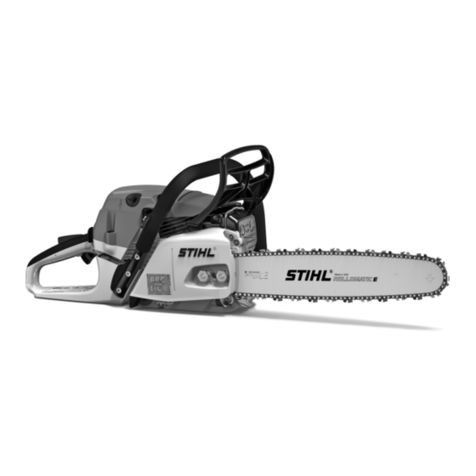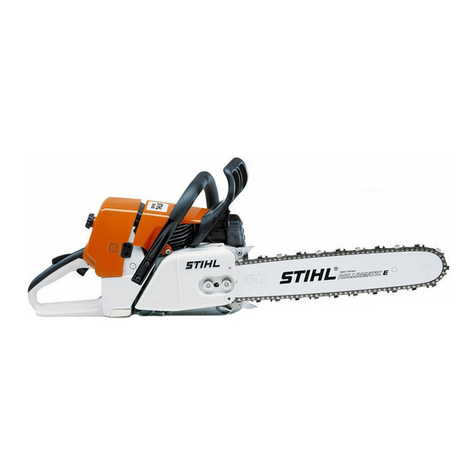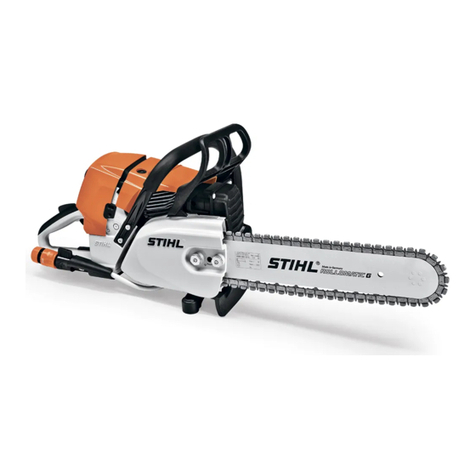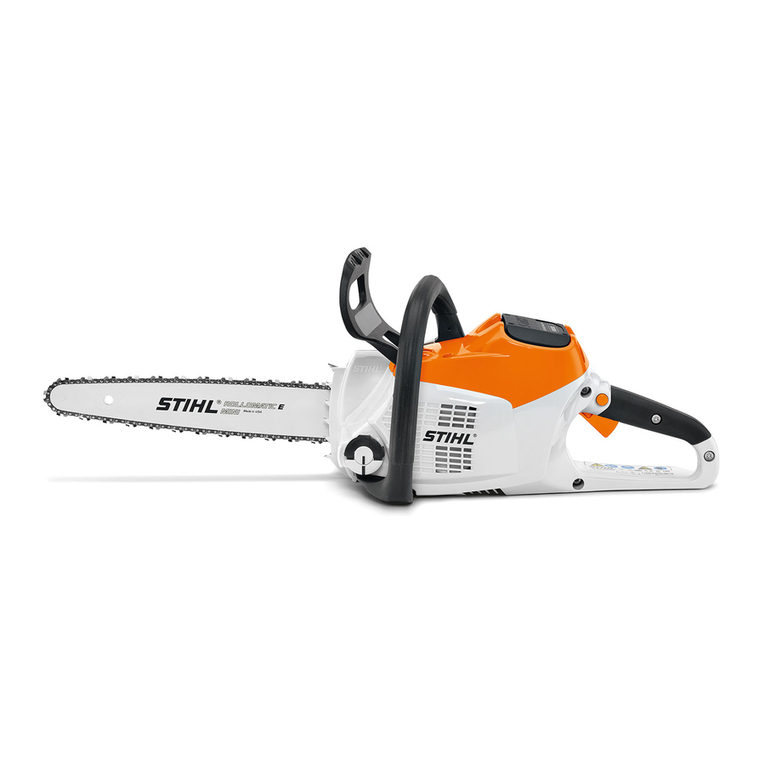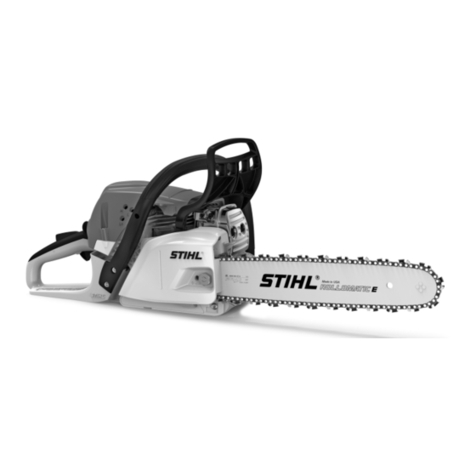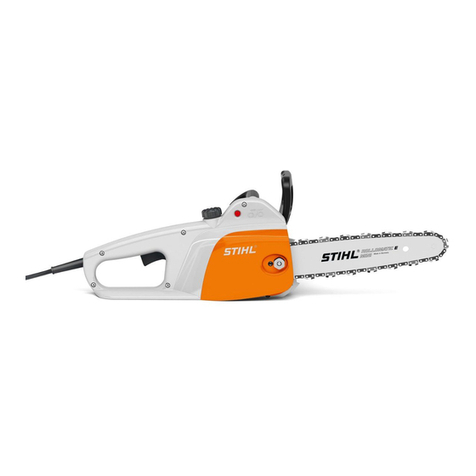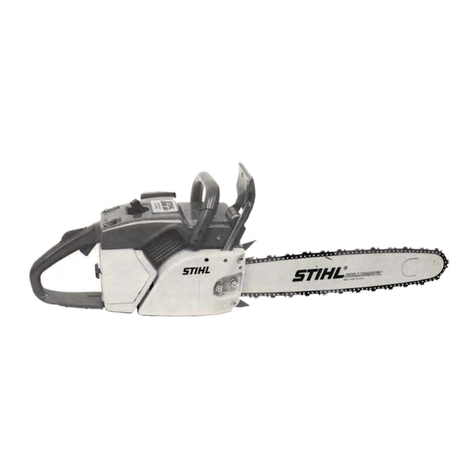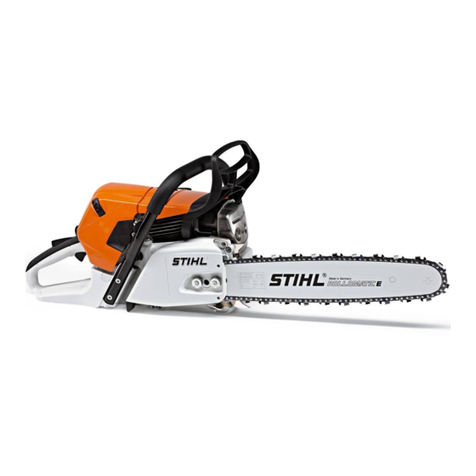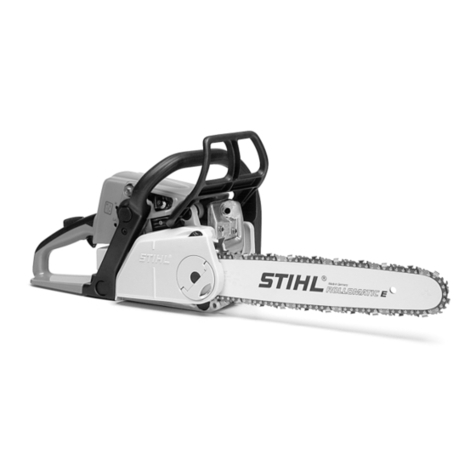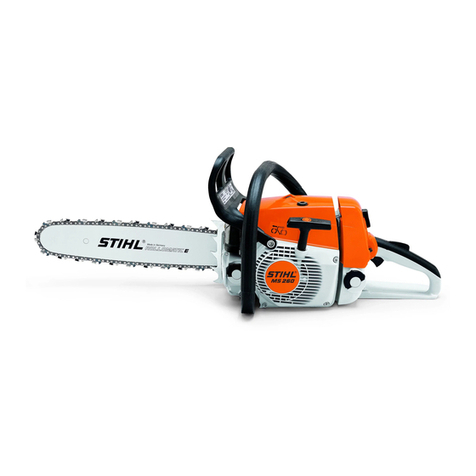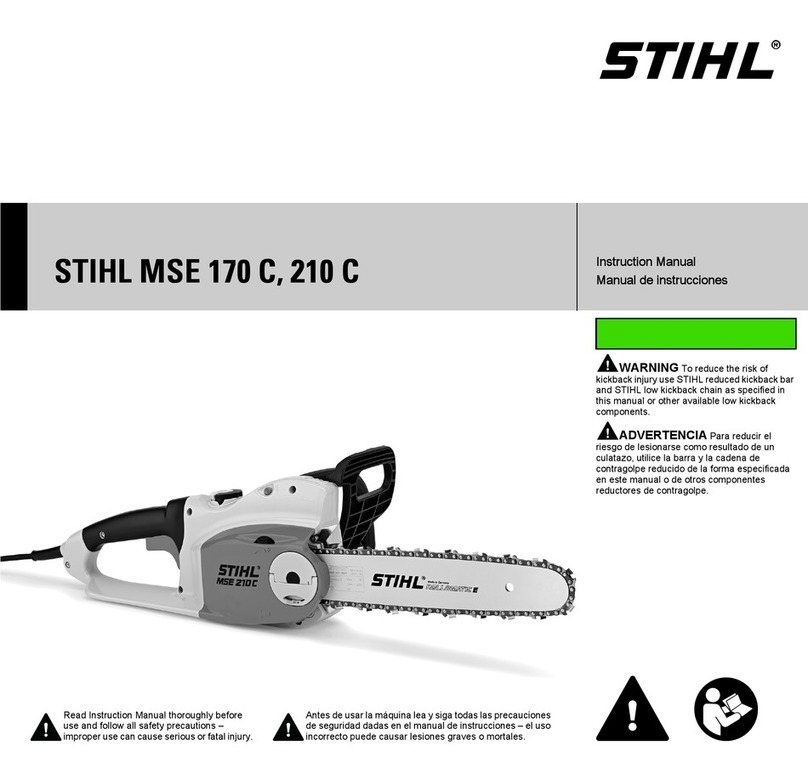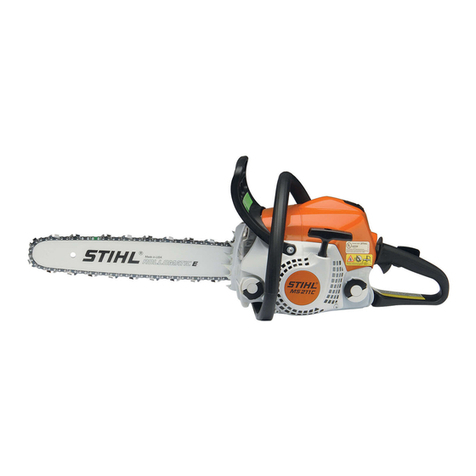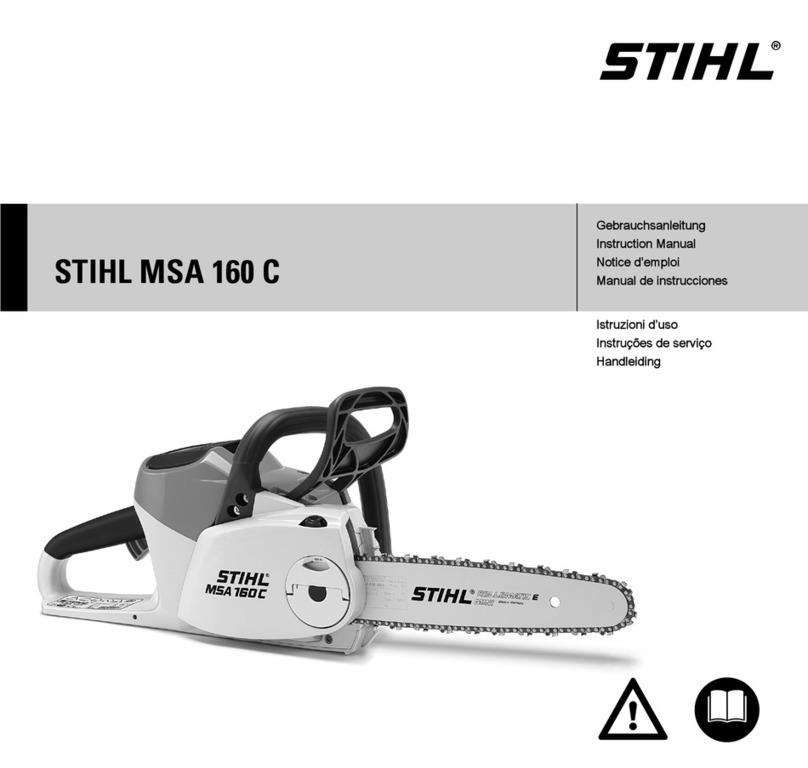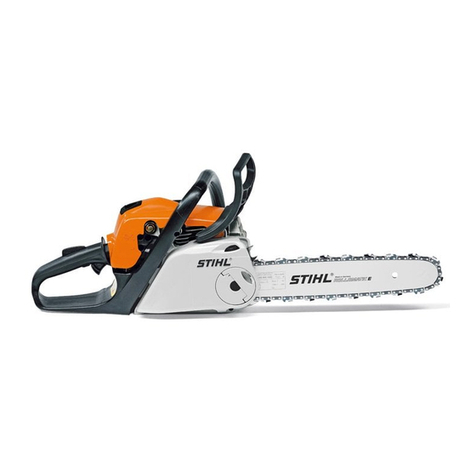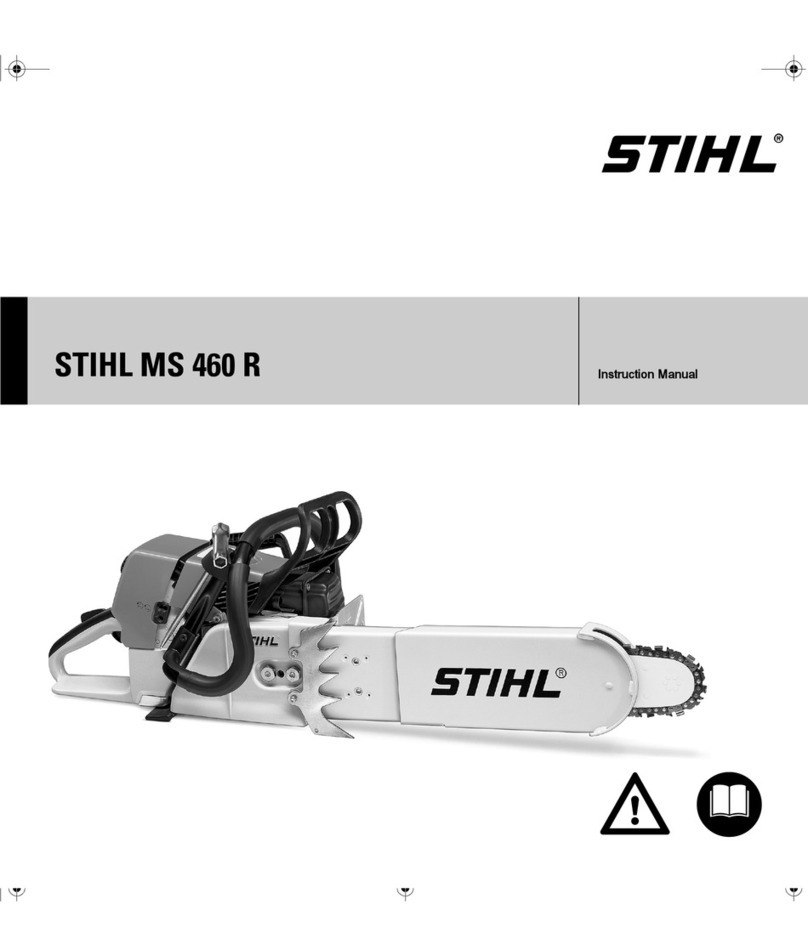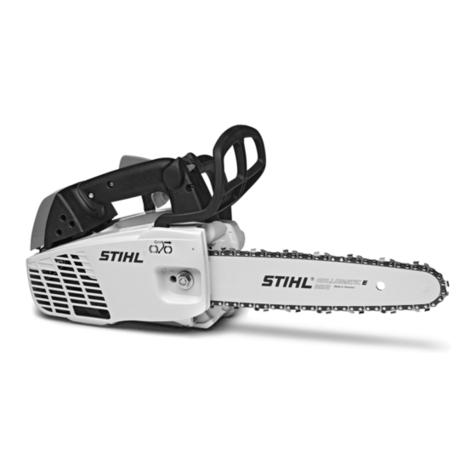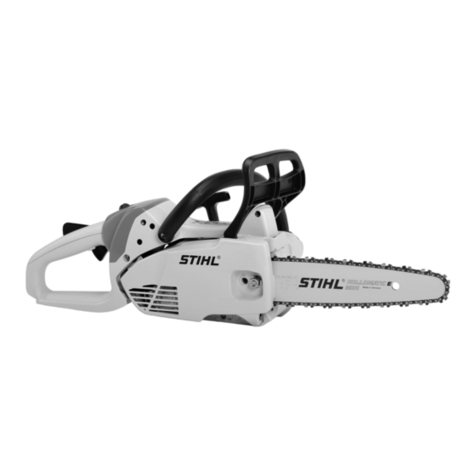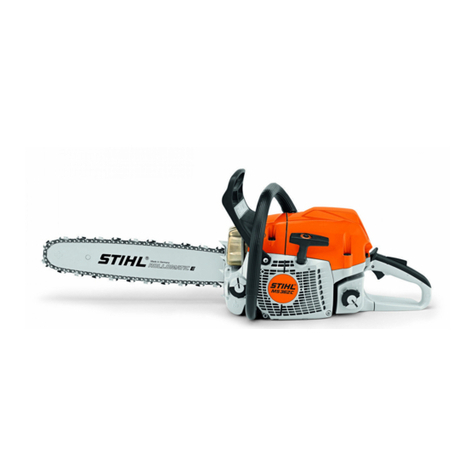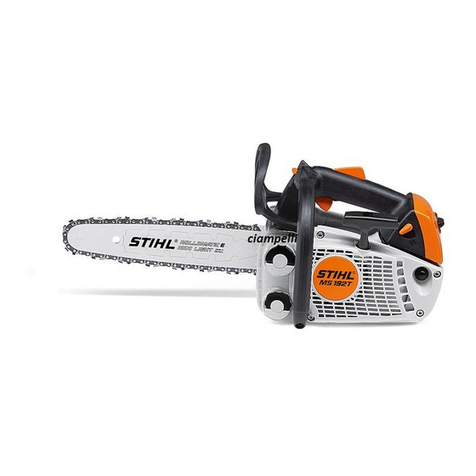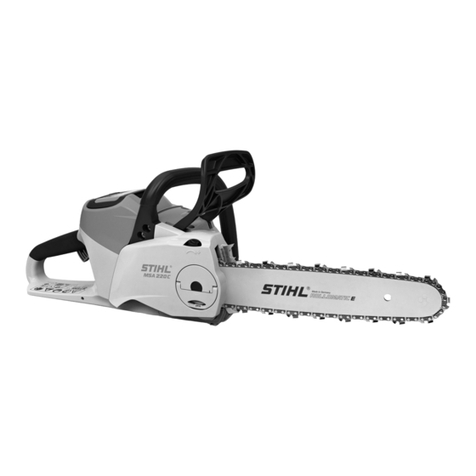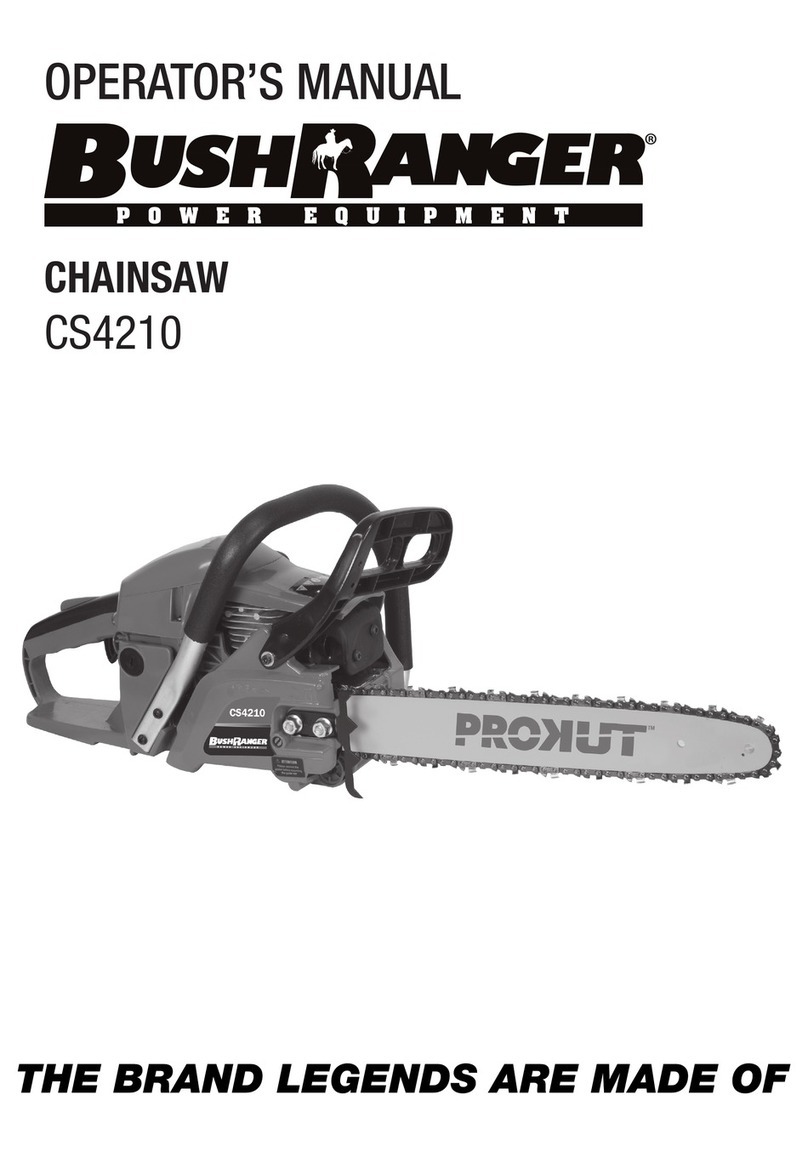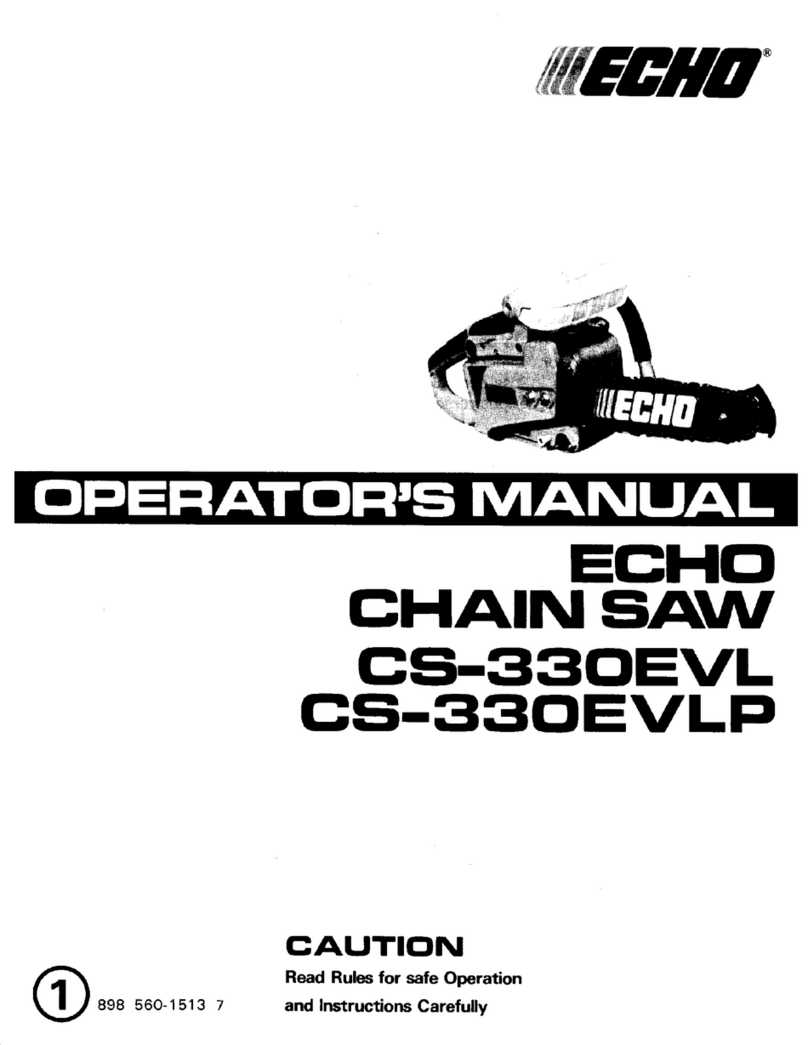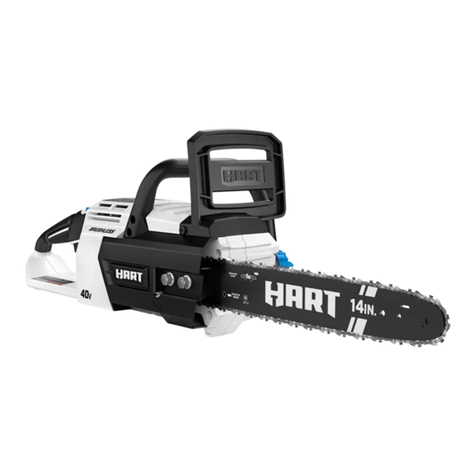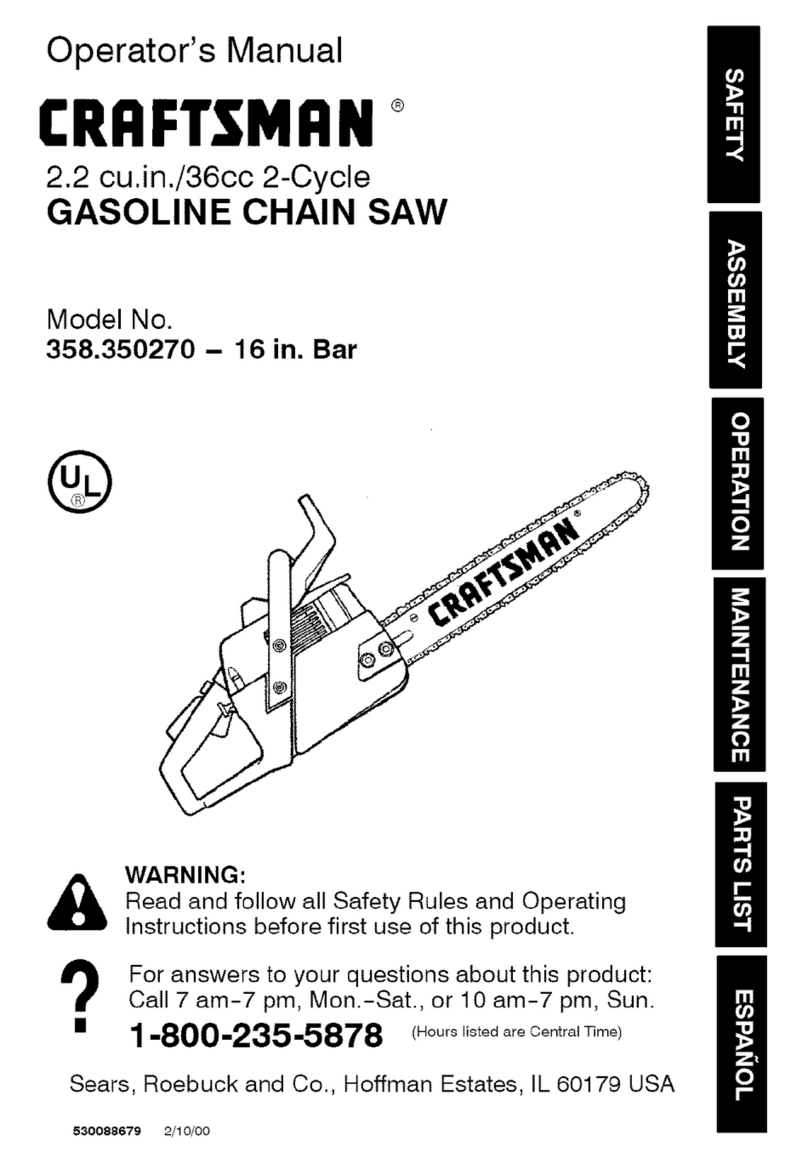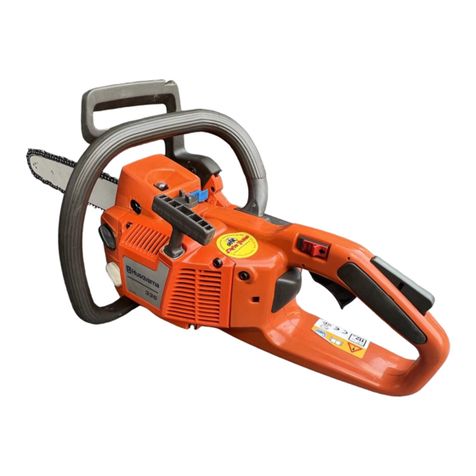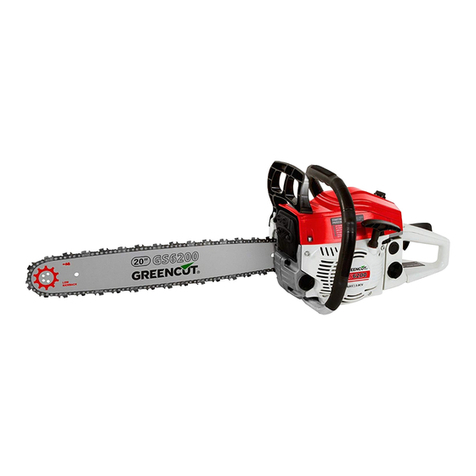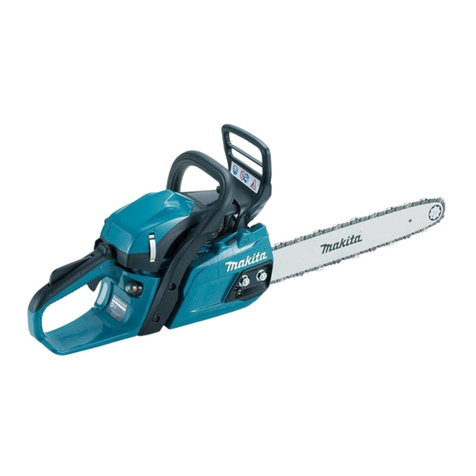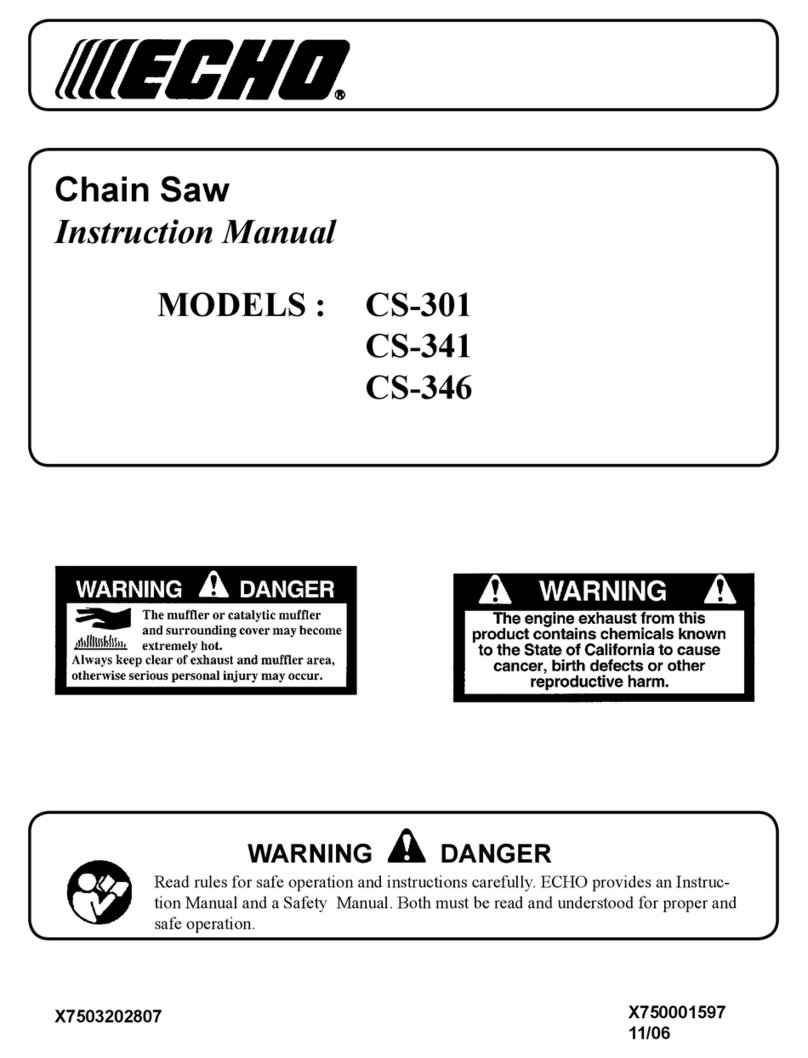
When the engine is running: Note that the saw
chain continues to rotate for a short period after
you let go of the throttle trigger – coasting effect.
No smoking when working with or near the chain
saw - risk of fire! Combustible fuel vapour may
escape from the fuel system.
Examine the saw chain periodically at short inter‐
vals and as soon as you note any tangible
changes:
–Switch off the engine; wait until the saw chain
is stationary
–Check condition and secure fitting
–Check sharpness
Never touch the saw chain when the engine is
running. If the saw chain becomes jammed by an
object, switch off the engine immediately before
attempting to remove the object – risk of injury!
Always turn off the engine before leaving the
machine unattended.
To change the saw chain, switch off the engine.
Risk of injury from the motor starting unintention‐
ally!
Keep easily combustible materials (e. g., wood
chips, bark, dry grass, fuel) away from hot
exhaust gases and hot mufflers – risk of fire!
Mufflers with catalytic converters can become
especially hot.
Never work without chain lubrication – monitor
the oil level in the oil tank. Stop work immediately
if the oil level in the oil tank is too low and top up
with chain oil – see also "Topping up with chain
oil" and "Check chain lubrication".
If the machine is subjected to unusually high
loads for which it was not designed (e. g., heavy
impact or a fall), always check that it is in good
condition before continuing work – see also
"Before starting work".
Check the fuel system for leaks and make sure
the safety devices are working properly. Never
continue using a machine that is not in perfect
working order. In case of doubt, have the unit
checked by your servicing dealer.
Check for correct idling, so that the saw chain
stops moving when the throttle trigger is
released. Check the idle setting regularly and
correct when possible. Have the machine
repaired by a STIHL servicing dealer if the saw
chain still continues to move during idling.
The chain saw produces poisonous
exhaust gases as soon as the engine
starts. These gases may be colour‐
less and odourless and may contain
unburnt hydrocarbons and benzene.
Never work with the machine indoors
or in poorly ventilated areas, even if
your machine is equipped with a cata‐
lytic converter.
Ensure proper ventilation when working in
trenches, hollows or other confined locations –
risk of fatal injury from breathing toxic fumes!
If you feel sick, have a headache, vision prob‐
lems (e. g., your field of vision gets smaller),
hearing problems, dizziness or inability to con‐
centrate, stop work immediately. Such symptoms
may be caused by an excessively high concen‐
tration of exhaust emissions – risk of accident!
2.11 After finishing work
Switch off the motor, engage the chain brake and
attach the chain scabbard.
2.12 Storage
When the machine is not in use, it should be
stored in such a way that no-one is endangered.
Secure the machine against unauthorised use.
Store the machine in a safe, dry room.
2.13 Vibrations
Prolonged use of the power tool may result in
vibration-induced circulation problems in the
hands (whitefinger disease).
No general recommendation can be given for the
length of usage because it depends on several
factors.
The period of usage is prolonged by:
–Hand protection (wearing warm gloves)
–Work breaks
The period of usage is shortened by:
–Any personal tendency to suffer from poor cir‐
culation (symptoms: frequently cold fingers,
tingling sensations).
–Low outside temperatures.
–The force with which the handles are held (a
tight grip restricts circulation).
Continual and regular users should monitor
closely the condition of their hands and fingers. If
any of the above symptoms appear (e.g. tingling
sensation in fingers), seek medical advice.
English 2 Safety Precautions
6 0458-506-0121-C
